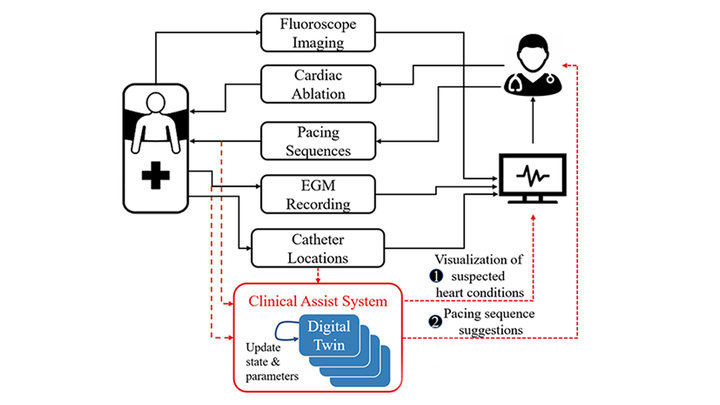 Image credit: Unsplash
Image credit: Unsplash
Abstract
Cardiac Ablation is an effective treatment of arrhythmia in which physicians terminate fast heart rate by transecting abnormal electrical conduction pathways in the heart with RF energy. During the procedure, physicians diagnose the condition of the heart and locate ablation sites by analyzing electrical signals sensed by catheters inserted into the heart. Due to the limited observation of the patient’s heart, there may exist multiple heart conditions that can explain historical observations, causing ambiguities in the patient’s heart condition. During the procedure, physicians have to visualize and continuously update these suspected heart conditions in their mind, causing heavy mental burden on the physicians. In this paper, cardiac electrophysiology is formalized using a physiological model of the heart, such that the diagnosis problem during cardiac ablation can be formalized as parameter identification and state estimation problems with the heart model. We then propose a model-based clinical assist system which partially solves the diagnosis problem during cardiac ablation. The system enumerates suspected heart conditions by creating “digital twins” of the patient’s heart with heart models. The heart models are used to represent and visualize suspected heart conditions, and are systematically updated and removed with new information during the ablation procedure. The system provides more rigorous and intuitive interpretation of current understanding of the patient’s heart, and improves the accuracy and efficiency of cardiac ablation procedures by relieving the physicians from demanding low-level reasoning.